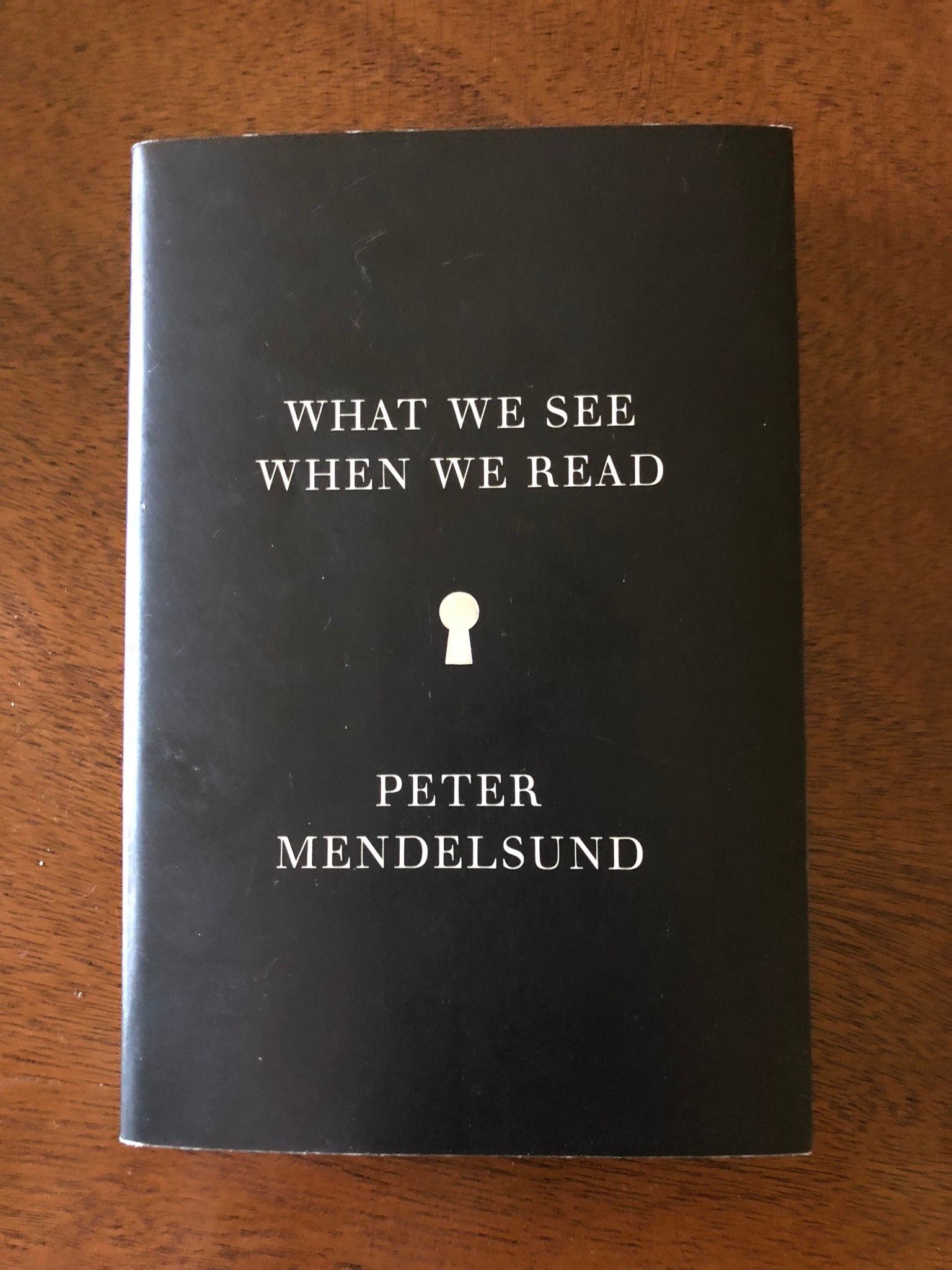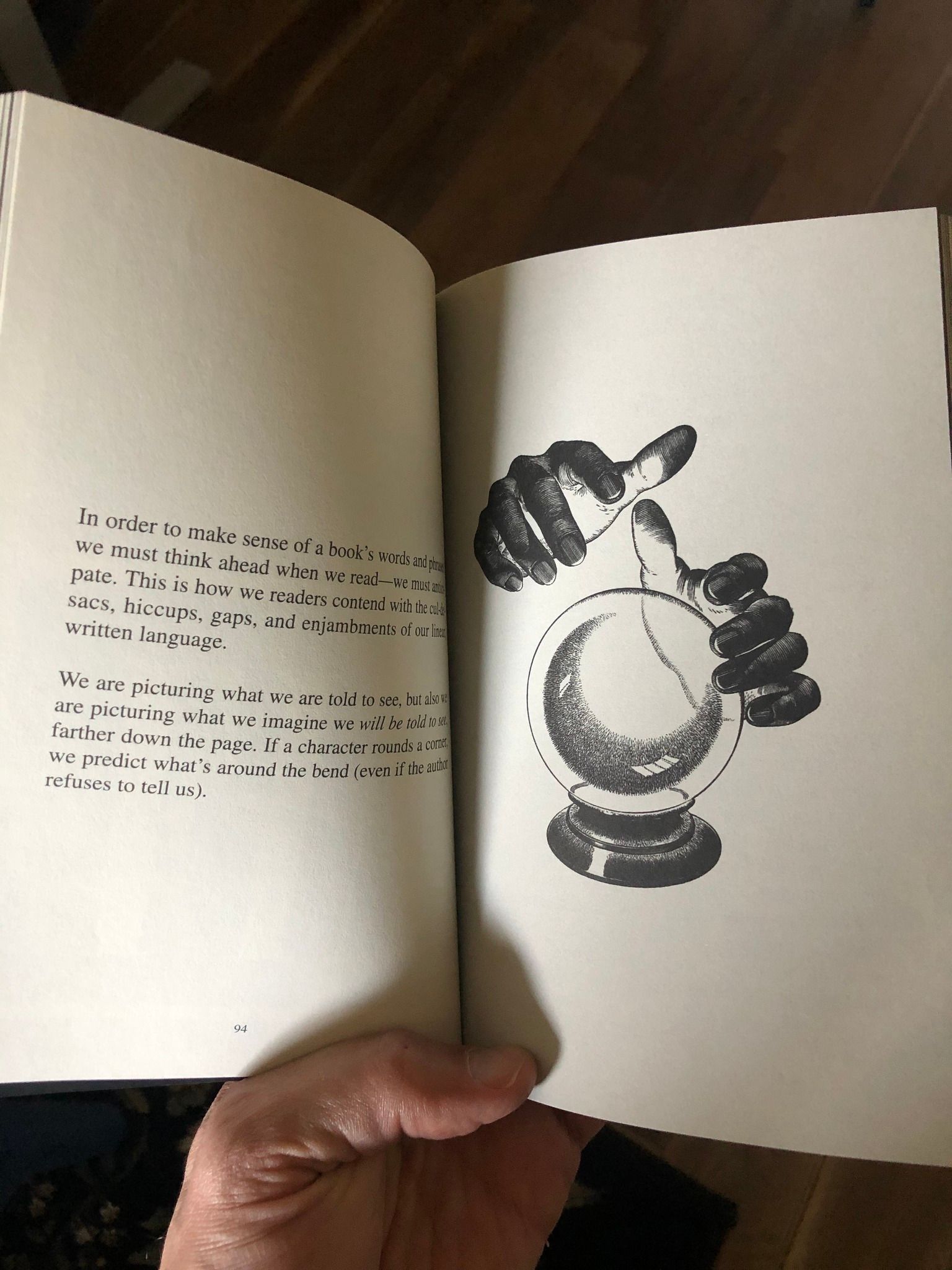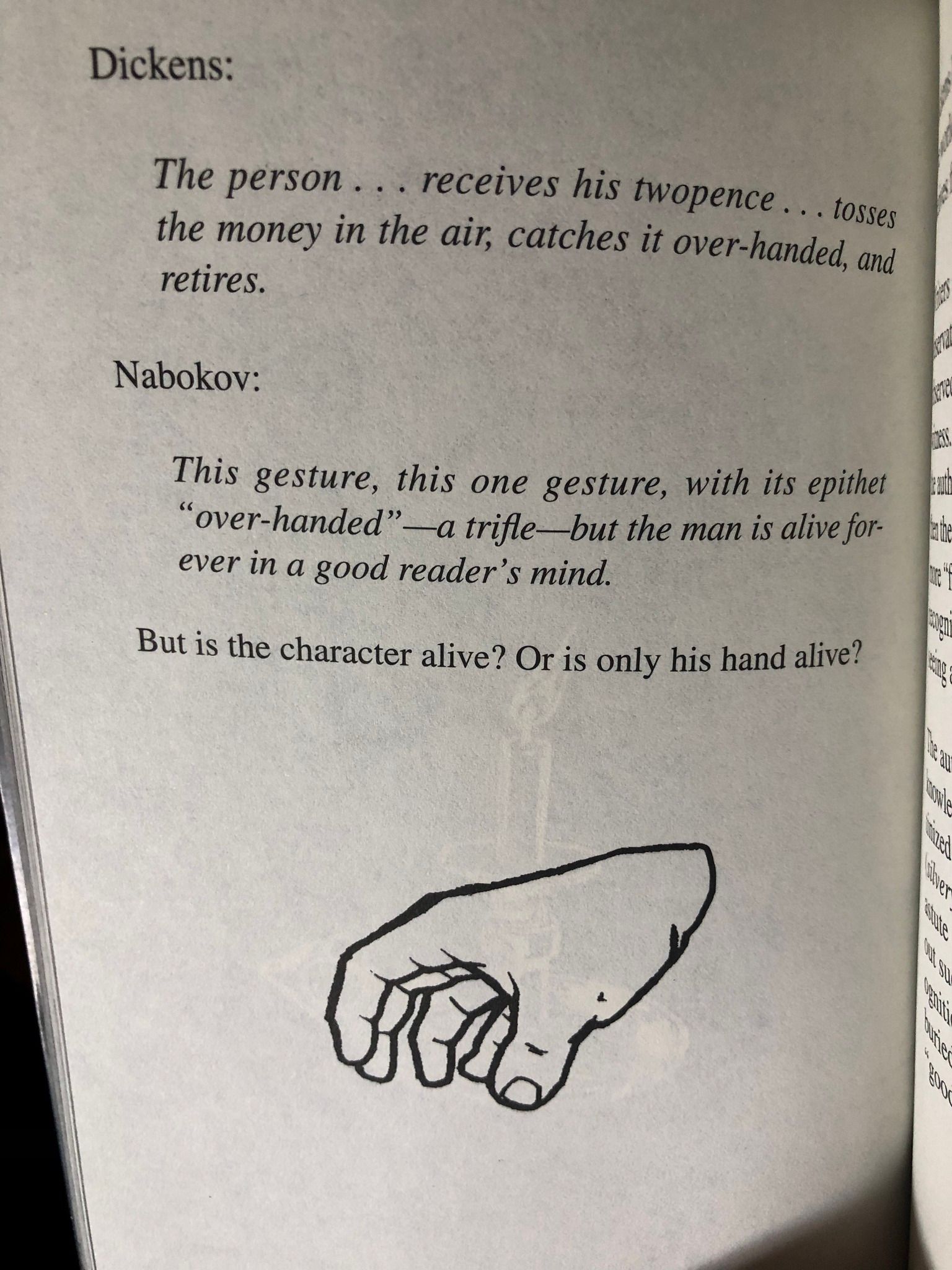
Natalie Beach, writing for Oprah Winfrey’s book recommendations, described this book as part TED Talk, part picture book. I think that’s the most accurate summary of “What We See When We Read.” It’s beautifully laid out and designed, thought-provoking, and a quick read that garners your rapt attention.
Peter Mendelsund is intelligent and accessible, calling back to Roland Barthes and Julian Jaynes to connect their niche humor and insight to the familiar and mainstream. He explores the psychological and neurological effects of reading—what happens as we build pictures based on words on the page. Reading is a multifaceted, multi-sensory, synesthetic experience.
Readers will enjoy this, but I think it’s a valuable resource for writers too. It reminds us that the words we choose create an emphasis on the minds of our readers—whether we intend to or not. An example he gives is of a cat’s green eyes. Nearly all cats have green eyes, but calling attention to that word makes the green stand out in the dark. This applies to characters traits as well, such as someone catching something overhanded. It isn’t universal, but helps us put a finger on the moving target of their personality. Their physical appearance and choices of behavior says something about their character.
He describes the disappointment when we see a film adaptation of our favorite book, only to find the actors don’t match up with our internal casting. In one section, he shows various depictions of Anna Karenina rendered by a police sketch artist. Would it align with your own version of her?
One thing that has always stood out to me is how my mind wanders while reading. Often, I’ll get great ideas from inspiration, tangential concepts that are still loosely related but not directly. There are certain authors who invite this more than others, and I notice it can frustrate some readers. But I welcome these moments because I find it freeing and adventurous. While reading some business development books, I’ll regularly consider unrelated things I DON’T want to do rather than the advice being offered. Much of the best parts of Peter Thiel’s “Zero to One” was that which was not on the page….
There are also points I disagree with and, therefore, inspired richer dialogue and discussion. One is Mendelsund’s assertion that there is no “zoom” feature in literature like there is in movies. You can’t punch into a shot to emphasize a detail. Yet, in talking to other visual artists and moviemakers, I find that’s EXACTLY what we do. That’s part of what makes reading so enjoyable: how I’m able to create a visual narrative inside my mind. “Invisible Man” came out as a complete film as I read it, as did “The Divine Comedy.” I couldn’t unsee those pictures, and they’ve stayed with me for years. It’s what draws me, time and again, to the works of Dante, Milton, Fitzgerald, Ellison, Hemingway, Kazantzakis, Dostoyevsky, J. A. Baker, and more. They’re all visual artists to me, painting an inner landscape that’s rich and expansive.
Although its dimensions are handheld, it would make a great coffee table book or gift. You can grab it here: https://amzn.to/3KuGjft

